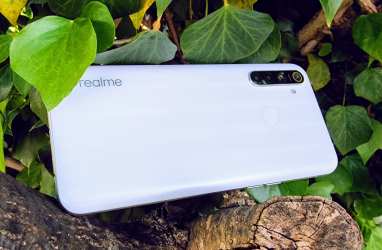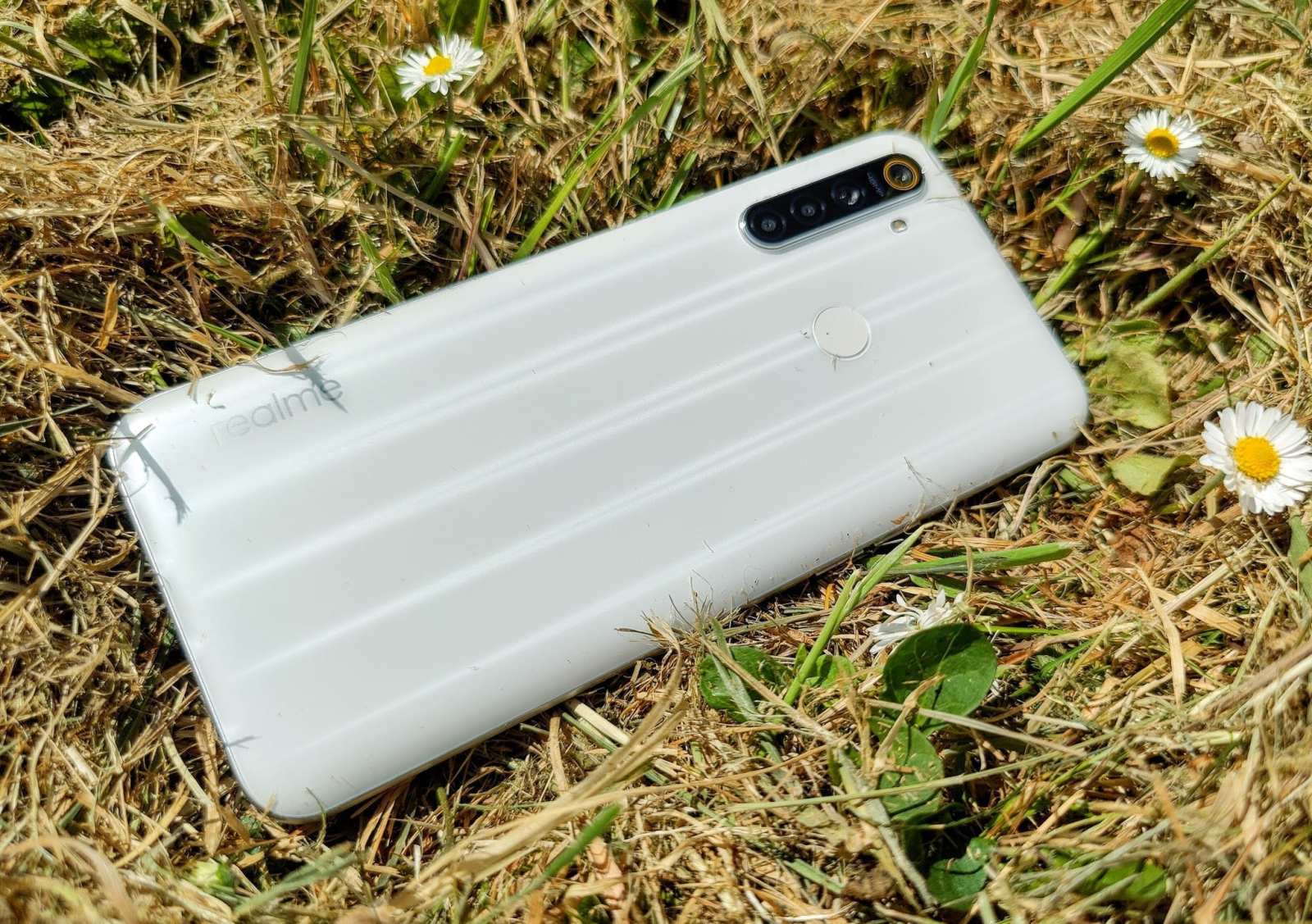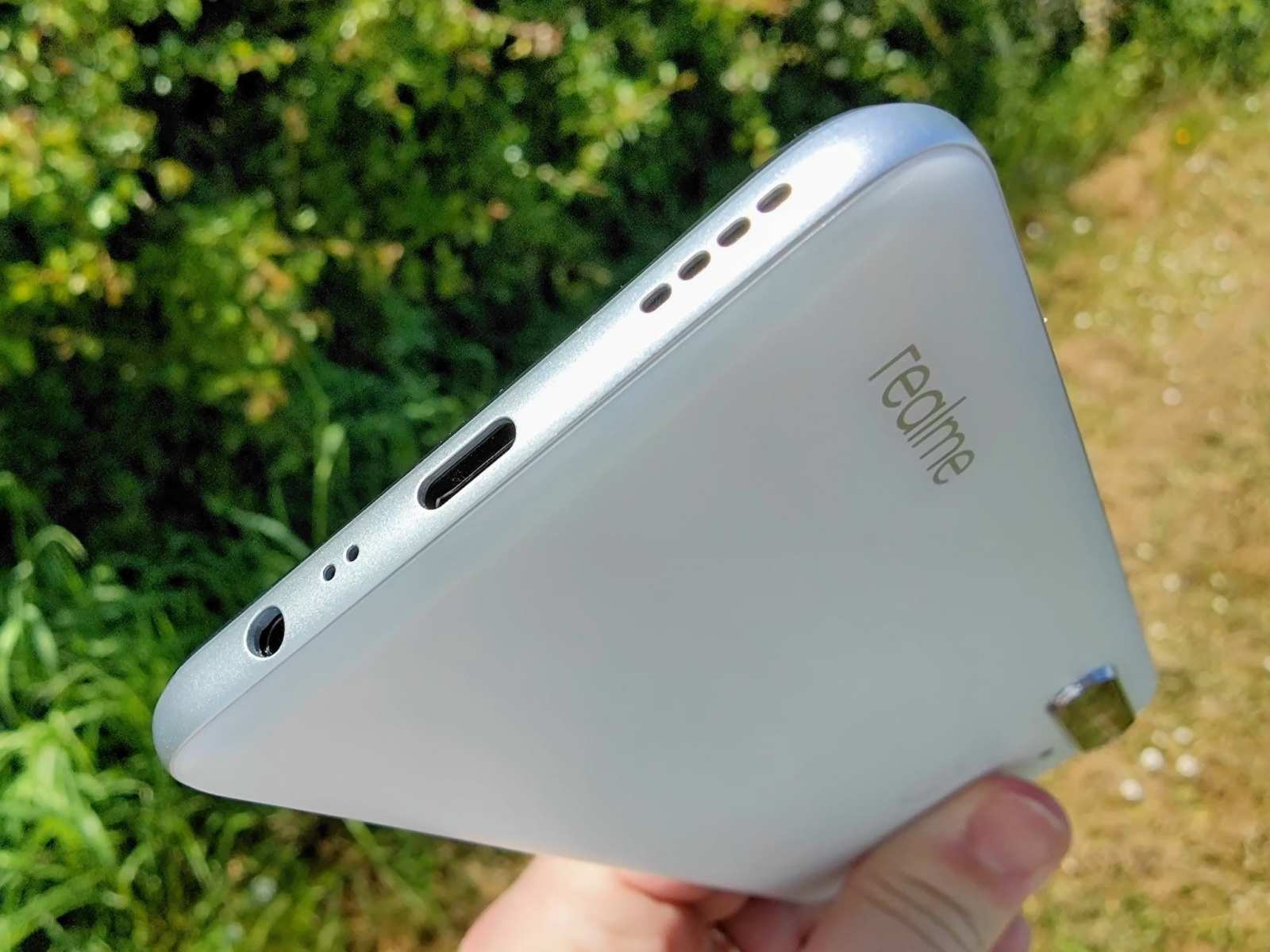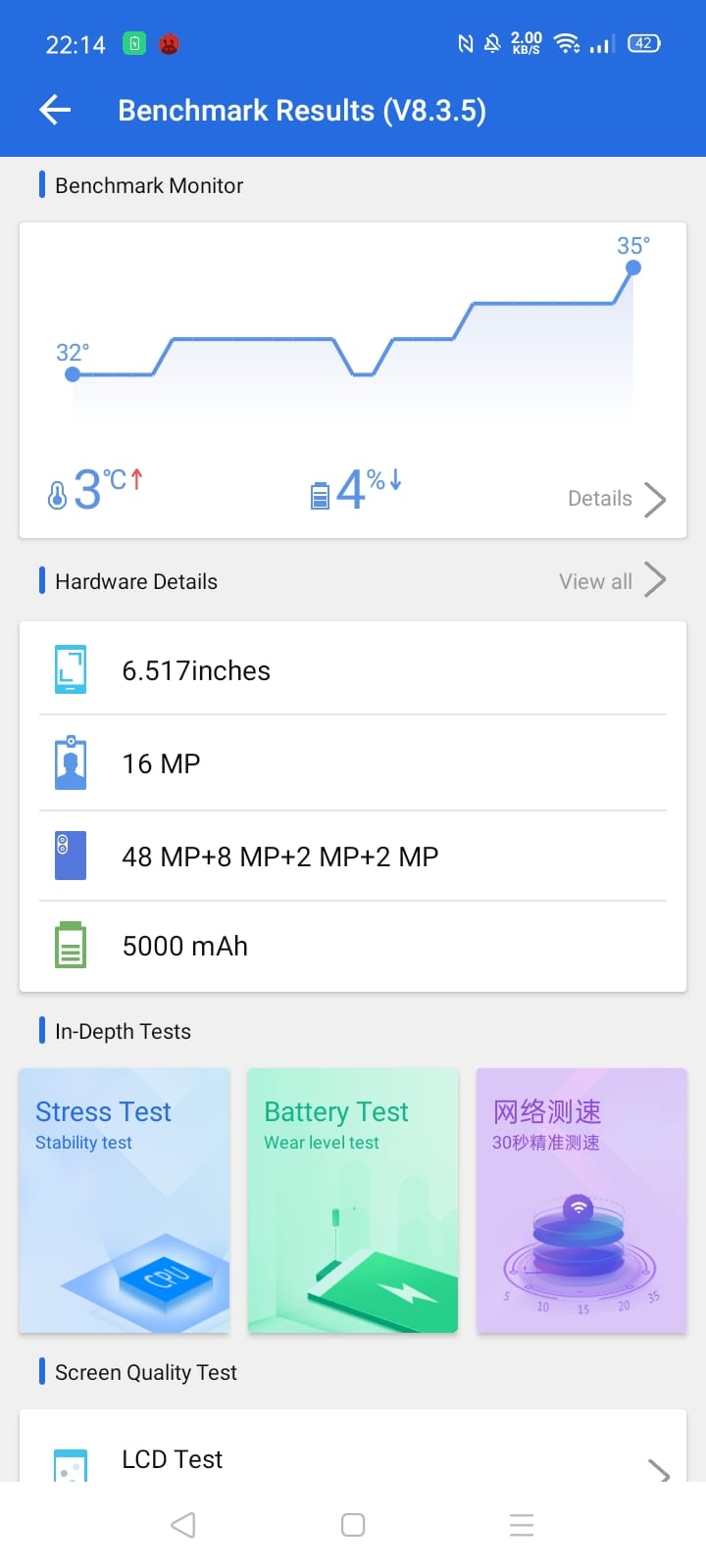
Realme 6i Review: Getting the basics right
My first experience of a Realme phone was the flagship X50 Pro 5G and now I’ve had a chance to try a far more budget offering in the form of the £189 Realme 6i.
There are naturally a number of differences between the two, but hopefully not so much to stop it becoming a decent phone for those on a budget, or those who have different priorities on what they want and need from a phone.
So let’s take a look…

Design and hardware
A plastic phone will never look as good as a premium phone with shiny glass on the back, unless you’re looking at rendered images from the manufacturer that always manage to make them look indistinguishable from each other.
The feeling to the touch of the Realme 6i feels cheaper (because, of course, it is), but it isn’t actually that big a deal in the grand scheme of things.
Why? Well, for one thing, you get a protective clear case in the box that solves the touch and feel issue.
Secondly, plastic is more durable than glass so once you forget about the look of the phone from the side you’ll rarely see, it can actually have some actual benefits.

The white version of the phone I was given to review doesn’t look too bad in the photos, and the case is a smoked grey colour that darkens things considerably. It perhaps leaves the phone looking a little muddy, but if you prefer you can probably go without the case and not worry.
Like other Realme phones, there’s not much else going on at the back – besides the coloured circle around the primary camera, and the Realme logo.
On this phone you’ll also see a rear-mounted fingerprint sensor, as the phone doesn’t have any fancy in-glass sensor, which is perhaps not a surprise given the price.

The phone also has a single down-firing speaker that sits next to the USB-C port (it’s great that this phone didn’t get an old micro-USB connector as some entry level phones from other manufacturers did until quite recently) and then on the right (when looking from the front) is a power button, and two volume keys on the left hand side.
Oh and, yes, like many other budget handsets you’ll still get a 3.5mm headphone jack. It seems like budget phones are pretty much now the only way to enjoy wired headphones without adapters.

Display & Audio
Turn the phone around to look face on and you’ll hopefully be impressed with the 6.5-inch display if you want a phone to consume multimedia content, or view photos. There’s a factory fitted screen protector installed too.
The LCD display only has a resolution of 720×1600 pixels. 720p might sound bad now we have displays with up to 4K resolution, but that’s still 270 pixels-per-inch.

Pixel peepers might see the lack of resolution if looking really close up, but bear in mind you can buy tablets from Amazon with fewer pixels and much larger screen sizes.
Text is still perfectly legible, even on the smallest font size in the settings menu, and video looks fine too, even if there’s no HDR support, stereo sound, or fancy video enhancements in software. The display also a regular 60Hz refresh rate.
The tear drop notch is quite large, and there’s a large chin at the base of the phone that puts the screen a bit off-centre in landscape mode. If you were hoping for tiny bezels, you’re out of luck but – again – this is an entry level phone.
Performance & Features
Fewer pixels does place less strain on the GPU, which is a bonus given the phone comes with a MediaTek Helio G80 SoC that isn’t going to set the world ablaze when it comes to performance.
The phone isn’t slow, but I did encounter some issues with the phone pausing for no obvious reason at random times. This was noticed when attempting to unlock the phone, where it occasionally appeared as if the phone had powered off.
I also had some issues with the touchscreen sensitivity, albeit rarely and for no obvious reason (I wasn’t running any processor intensive apps). I found that if I pressed harder it was more likely to respond.
Think of it as being more like a resistive screen of yesteryear, but I suspect the reason this worked was because pressing harder resulted in more of the screen being touched, and the phone having more time to respond.
This is hopefully something that can be fixed in software. If and when this fix comes, I’ll be sure to note here if anything changed.
For most of the time the phone is suitably quick at performing day-to-day stuff like navigating through the launcher and running apps.
It can even cope with games, although the more demanding ones will likely see most or all graphical enhancements turned off. When it comes to games on phones, developers seem to be aware of lesser models and make sure games still run at an acceptable level.
You can see from the benchmarks above that this phone isn’t something you’d want to use for things like editing video or photos, but I doubt anyone with such demanding needs would looking at this phone anyway.
The phone comes with a choice of 3GB or 4GB RAM and 64GB or 128GB of storage. The £189 model sold in the UK is the 4GB/128GB model, which is nice.
Both variants come with a microSDXC expansion slot to add more storage, alongside dual nano SIM slots. You’ll be pleased to know you don’t have to choose between a memory card or second SIM card here as you have three individual slots in the tray.
One big disappointment is being limited to only 2.4GHz Wi-Fi. I can fully accept the lack of Wi-Fi 6, but no 5GHz Wi-Fi is indicative of the ageing chipset used here.
It could lead to some issues if you’re using Wi-Fi in a congested area, although hopefully as more people adopt 5GHz access points, it may become less of an issue.

Staying power
The last thing to note is the 5,000mAh battery, complete with 18W fast charging support. This isn’t up there with the, frankly, ludicrous 65W charging on the X50 Pro 5G (or Oppo’s Find X2 Pro) but it’s still a respectable charging rate, especially at the price.
I’m always looking for a phone to last a full, honest, day. That means working from early until late, and not forcing any compromise on usage to save power.
You’ll want to check messages, use navigation, take photos and watch video – so if the phone can’t let you do all of that until you get home, we’re not going to get along.
Thankfully, of late, most phones are quite capable of surviving a full day, but this phone takes things to another level where you are now looking at getting two or more days of usage.
Clearly the battery isn’t that much bigger than some flagships on the market, but with a lower resolution display, lower screen brightness, and a slower overall chipset, the power management is sufficient to keep things ticking over so you won’t have to worry at all.
I’d still opt to charge overnight whenever possible, but this is a phone that you could go away for a couple of days and potentially not have to charge at all.

Camera
The camera is where things get a little more interesting. You have a quad-camera arrangement, headed up by a 48-megapixel primary camera.
You might not expect much from a budget phone, but things have come a long way and now you’d expect a reasonable standard. For stills at least, the Realme 6i left me pretty impressed.
The phone has the same camera software as the premium Realme (and Oppo) handsets, perhaps not surprising as Realme UI is just Oppo’s ColorOS renamed, and Oppo is of course under the same umbrella company, BBK Electronics.
You have a good deal of control over the camera features, so you can either opt for more normal, muted colour, photos or go with the various enhancements that boost up the saturation and make images more ‘shareable’ on social media without editing.

As you’ll see from the photos below (a limited selection due to the lockdown), the photos are up there with other phones sporting a 48-megapixel camera.
HDR improves the dynamic range, of course, but there is more of a delay that can create some blurring if there’s too much movement. If you want to minimise any shutter lag, you’ll also need to turn HDR off.
The other cameras are for ultrawide (8-megapixel), macro (2-megapixels) and depth (also 2-megapixels, for portrait images and bokeh).
On the front is a 16-megapixel camera that can also record 1080p video at 30fps.
For primary camera on the back can also capture 1080p video at 30fps.
You also get night shooting, but this isn’t done in the same way as the more expensive models that take multiple shots to intelligently combine – coping with some degree of movement.
Here you take a 3 or 4 second shot, and while it can manage without being on a tripod (just as when we were first wowed by tripod-free night shots from Huawei and Honor), the end result is somewhat disappointing with loads of camera noise.
Video recording and low-light photography is where the compromises can be seen most, but that doesn’t make the camera a write off by any means. As something for taking outdoor photos, either for your holiday collection or just to share on Facebook, the flexibility of the different cameras adds up to a decent overall package.
Photo Samples

Final Thoughts
I’ve had mixed views on MediaTek powered phones for some time, and the Realme 6i didn’t quite change my opinion just yet. I have a feeling that with a Qualcomm chip inside, the phone might have performed that little bit better.
But, that said, if you’re on a budget and not too worried about the ability to use your phone as a replacement to a normal computer, the phone does reward you with excellent battery life, a nice screen and a perfectly good camera for the majority of usage needs.
It can, of course, make and receive calls and manage all your messaging needs perfectly well. It will run all your social networking apps, and the selfie camera will also help with those at-home video conferences for work – whether you opt to use Zoom, Teams, Meet, Messaging or whatever floats your boat. Chances are the camera is a lot better than the one on your PC too.
There’s the full range of Google apps, as well as NFC for Google Pay, and it ships with Android 10 out of the box. It will at some point get Android 11, although I wouldn’t want to hazard a guess as to when. I expect most buyers won’t be too concerned about this, as long as the security updates come regularly.
I haven’t seen or tried the Realme 6, but it does offer a lot more functionality and for just £30 extra. There’s a higher resolution 90Hz display, faster processor, and also faster charging – but it also comes with a smaller battery.
I’d be willing to take a gamble that the Realme 6 is probably the smarter buy if you can stretch your budget, but if you’ve already increased your budget from even cheaper phones, that may not be practical.
Therefore I can say the Realme 6i will get the job done, even if you’ll perhaps need to demonstrate a little more patience with it.
More info: Realme 6i




















